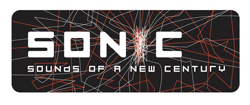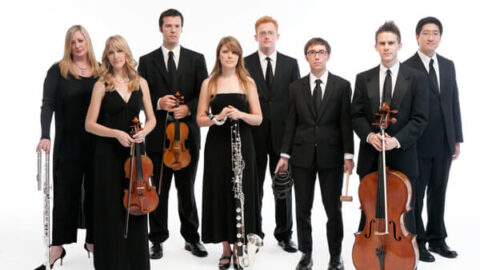 The Extended Play Marathon concert on October 16th at Columbia’s Miller Theatre was just that, a marathon. The lineup was very diverse, ranging from string ensembles to wind ensembles, from solo piano to brass ensembles, and from an a cappella choir to a painting robot with percussion. While there was so much to choose from, I will only comment on a few key works.
The Extended Play Marathon concert on October 16th at Columbia’s Miller Theatre was just that, a marathon. The lineup was very diverse, ranging from string ensembles to wind ensembles, from solo piano to brass ensembles, and from an a cappella choir to a painting robot with percussion. While there was so much to choose from, I will only comment on a few key works.
Hector Parra’s String Trio was one of the evening’s standout pieces. From the very beginning, the rhythmic spacing of the trio and the use of both extremes of register and extended string techniques painted a bizarre and foreign sonic landscape. The Talea ensemble, who took this work on, did a fantastic job with the devilish techniques, including glissandi, scratching and clawing at the instruments. And to further fill out the landscape, Parra included a soundtrack including bass drums and chimes sounding off in the distance. At times he seemed to borrow from the spirit of Gyorgy Ligeti. During the final minute, the use of more traditional bowing techniques sounded fresh and vibrant, and gave a sense of peace. Overall, the piece was cohesive and brilliantly written.

The composer states that he was inspired by temporal and quantum physics, and while many composers who delve into such a microcosmic realm end up with a noble idea but a piece lacking in musicality, Parra was able to deliver on both counts.
The most visually interesting piece of the first half was Tractus for Ensemble and Painting Robots, a co-creation by composer Victor Adan and artist Douglas Repetto. Imagine a percussion ensemble at the center of the stage, each player with a pictorial score full of circles and lines, yet no notes. Behind the ensemble stand four 10-foot plastic rectangles, and atop each one sits a painting robot, armed with canisters of paint, ready to fire on the order of the robot masters, who stand behind the plastic sheets. And then the piece begins. There are some interesting rhythms, but the music is filled with cacophonous squeaks and bangs. The violinist plays col legno up near the scroll, imitating a creaky door hinge. The paint lines slowly trickle down the plastic sheets, and by the end of the piece, each sheet looks as though a woman cried over them, with mascara and eyeliner bleeding down black and green, black and purple, black and red.
Tractus is certainly unlike anything I had heard or seen before, and while the concepts behind it are fresh, I will not be signing up to hear it again soon.
Another gem that I was able to hear on that beautiful Sunday was Vykintas Baltakas’ b[ell tree]. The virtuosic JACK Quartet did a fantastic job realizing the score. It opens very minimalistically, with some dotted rhythms, and then slowly a beautiful counterpoint develops, which reminded me of Shostakovich’s string quartets. And while it started so sparsely and perhaps timidly, we then heard elegant, confident lines weaving through and around each other, blossoming. Surprisingly, the composer’s muse for this beautiful piece was a Swiss cowbell, as per the program. I would love to hear what this composer has to offer next.

And there were two other pieces I heard in the first half that were equally, and perhaps even more, stunning. The first was Yotam Haber’s I Am, for string quartet and SATB chorus, combining the JACK Quartet and the New York Virtuoso Singers led by Harold Rosenbaum. It is based on a minimalist text (essentially “I am your” combined with seven words) by Agni Yoga. The string quartet part was mesmerizing, with the instruments dovetailing effortlessly amongst each other, giving the impression of swiftly flowing river. With this backdrop, the singers soared with energy. A truly wonderful performance.

The second was Filigree in Textile by Hannah Lash. It is scored for string quartet and harp. It was inspired by the tapestry art of the Middle Ages. The first movement, Gold, begins with a lyrical cello entrance, which then becomes a cantus firmus for the violins, and a dense counterpoint is woven. The second movement, Silver, is played with all strings pizzicato, giving a much lighter and more introspective feel. The final movement, Silk, was lively and interesting, with rapid major-to-minor shifts, creating a wonderful restlessness. The harp writing also became more classically idiomatic toward the end. Once again, the players did an excellent job, although there were a few times when the complex rhythms seemed a bit off.
All in all, it was a lively journey on that sunny Sunday, through so many different facets of new music. I am looking forward to the next Sonic Marathon.
—
Neil Prufer is a composer and pianist in New York City.
























